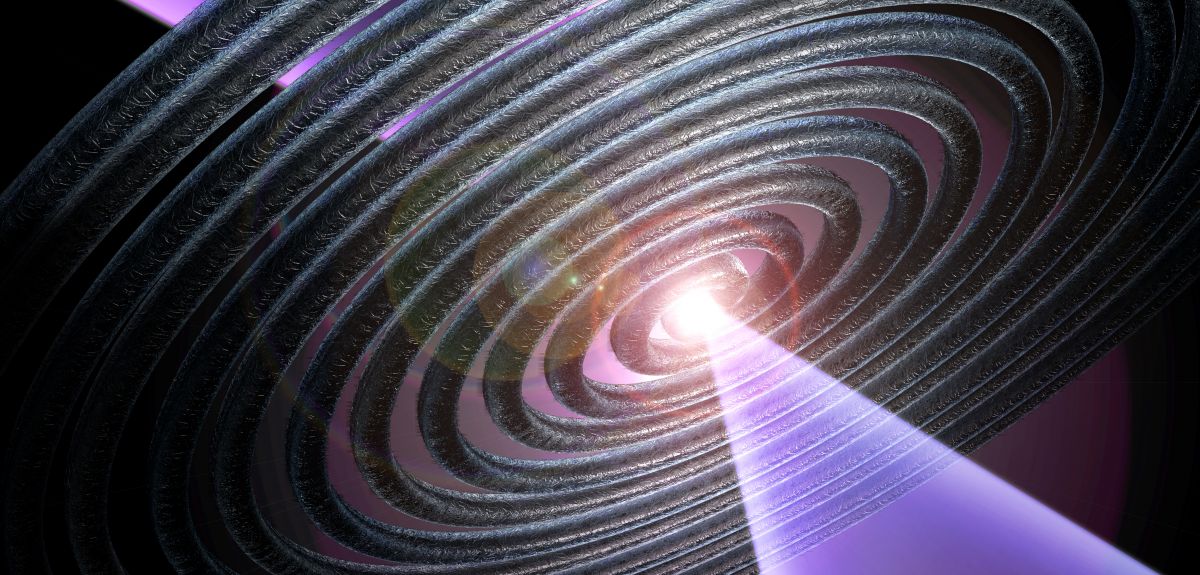
Image credit: Shutterstock
Gravitational wave detection: how binary stars turn into tight pairs of massive black holes
The Advanced LIGO team has just announced the direct detection of gravitational waves, a major milestone in the history of science that confirms one of Einstein's predictions and opens a new window into the near and far Universe.
However, it came as a major surprise that the observed gravitational-wave signal was produced by a pair of two merging black holes with individual masses of about 30 times the mass of our Sun. A team of astronomers from the universities of Bonn and Oxford has just discovered how very massive binary stars can turn into such tight pairs of massive black holes.
The results of the research, led by Pablo Marchant at Bonn, will appear in the journal Astronomy & Astrophysics. The researchers are not part of the Advanced LIGO team.
Professor Philipp Podsiadlowski of Oxford's Department of Physics, a co-author of the paper, said: 'The detection of gravitational waves is one of the most important discoveries in astrophysics in the past 50 years and the most important in physics since the discovery of the Higgs boson in 2012. It tests physics at the most fundamental level and provides the ultimate proof of the existence of black holes.'
Professor Norbert Langer is Director of the Argelander Institute for Astronomy at the University of Bonn and a co-author of the paper. Discussing the new theory for black-hole merging, he said: 'Some of the more massive black-hole mergers predicted by our theory can be seen throughout most of the observable Universe, allowing us to probe the evolution of massive stars in a completely new way. This has important implications for other exotic events, such as gramma-ray bursts and superluminous supernovae.'
The 'stellar graveyard' of dead stars consists of a number of compact objects: white dwarfs, produced by low-mass stars like the Sun; neutron stars, which are the remnants of more massive stars; and black holes, the anticipated end stages of the most massive stars.
Astronomers have previously observed tight pairs – but only those consisting of white dwarfs and/or neutron stars. The discovery by Hulse and Taylor that the orbit of a tight pair of neutron stars shrinks exactly as predicted by Einstein's theory of general relativity because of gravitational-wave radiation led to them being awarded the Nobel Prize in 1993.
These well-studied tight binaries consisting of white dwarfs and neutron stars are explained by a theory in which the progenitor of one of the compact stars engulfs its compact companion, drags it close to its core, and thereby strips its 'envelope' (a part of the star not gravitationally bound to its core). This complex theory, which is yet to be confirmed by direct numerical models, also predicts the formation of tight double black holes.
However, the new theory by Marchant and colleagues at Bonn and Oxford predicts another route towards the formation of tight black-hole pairs. This theory involves black holes that weigh at least 25 solar masses (25 times the mass of the Sun, or about 2 nonillion kg), consistent with the discovery announced by the Advanced LIGO team.
One complication to theories around the formation of tight pairs of compact stars stems from the fact that stars are generally thought to expand when they age. This new theory avoids such an expansion by invoking a mechanism that keeps the interior of very close and sufficiently massive stars completely chemically mixed. The reason for this is that tidal forces keep the stars in bound rotation – that is, they continue to show the same side to each other, similar to how the same side of the Moon always faces the Earth.
The fast orbital motion involved in this process leads to extremely rapid rotation of the stars, which triggers internal chemical mixing inside the star. Marchant and colleagues show, through a large number of detailed evolutionary calculations, that these stars never expand and that the binaries remain compact up to the collapse phase, when the stars turn into relatively massive black holes.
If the theory is correct, then the current Advanced LIGO discovery, together with other expected detections in the near future, will allow scientists to draw further conclusions about the fate of massive stars, including so-called gamma-ray bursts. Because of their rapid rotation, some of the black-hole progenitors may not collapse quietly, instead producing such a gamma-ray burst – a poorly understood phenomenon that occurs in about one in every thousand dying massive stars.
Furthermore, stars that are even more massive than the progenitors of the discovered merging black holes are, according to this theory, expected to produce what is known as a pair-instability supernova, a type of explosion that has been predicted for a long time but has lacked observational evidence. Indeed, the new theory predicts a gap in the distribution of black-hole masses between 60 and 130 times the mass of the Sun, where pair-instability supernovae completely destroy the star and no black holes are expected.
The merging black holes may provide us, therefore (and even without any electromagnetic signal), with major new insights into the poorly understood deaths of very massive stars.
A online preprint version of the article 'A new route towards merging massive black holes' is available in the journal Astronomy & Astrophysics.
 New research reveals mentoring improves children’s honesty years later
New research reveals mentoring improves children’s honesty years later
 Skills-based hiring driving salary premiums in AI sector as employers face talent shortage, Oxford study finds
Skills-based hiring driving salary premiums in AI sector as employers face talent shortage, Oxford study finds
 Oxford and OpenAI launch collaboration to advance research and education
Oxford and OpenAI launch collaboration to advance research and education
 Oxford Institute for Ethics in AI launches Accelerator Fellowship Programme
Oxford Institute for Ethics in AI launches Accelerator Fellowship Programme